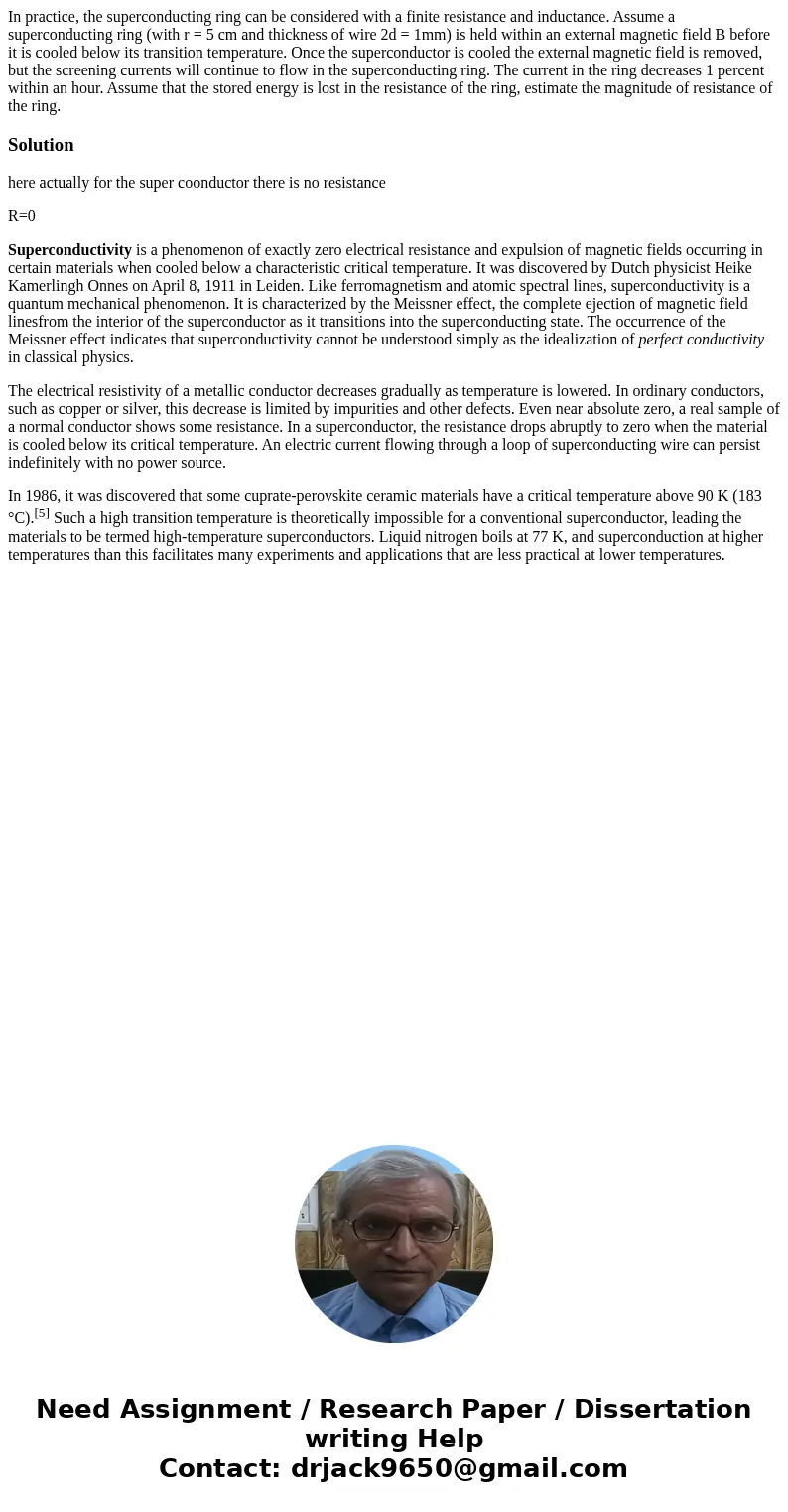In practice the superconducting ring can be considered with
In practice, the superconducting ring can be considered with a finite resistance and inductance. Assume a superconducting ring (with r = 5 cm and thickness of wire 2d = 1mm) is held within an external magnetic field B before it is cooled below its transition temperature. Once the superconductor is cooled the external magnetic field is removed, but the screening currents will continue to flow in the superconducting ring. The current in the ring decreases 1 percent within an hour. Assume that the stored energy is lost in the resistance of the ring, estimate the magnitude of resistance of the ring.
Solution
here actually for the super coonductor there is no resistance
R=0
Superconductivity is a phenomenon of exactly zero electrical resistance and expulsion of magnetic fields occurring in certain materials when cooled below a characteristic critical temperature. It was discovered by Dutch physicist Heike Kamerlingh Onnes on April 8, 1911 in Leiden. Like ferromagnetism and atomic spectral lines, superconductivity is a quantum mechanical phenomenon. It is characterized by the Meissner effect, the complete ejection of magnetic field linesfrom the interior of the superconductor as it transitions into the superconducting state. The occurrence of the Meissner effect indicates that superconductivity cannot be understood simply as the idealization of perfect conductivity in classical physics.
The electrical resistivity of a metallic conductor decreases gradually as temperature is lowered. In ordinary conductors, such as copper or silver, this decrease is limited by impurities and other defects. Even near absolute zero, a real sample of a normal conductor shows some resistance. In a superconductor, the resistance drops abruptly to zero when the material is cooled below its critical temperature. An electric current flowing through a loop of superconducting wire can persist indefinitely with no power source.
In 1986, it was discovered that some cuprate-perovskite ceramic materials have a critical temperature above 90 K (183 °C).[5] Such a high transition temperature is theoretically impossible for a conventional superconductor, leading the materials to be termed high-temperature superconductors. Liquid nitrogen boils at 77 K, and superconduction at higher temperatures than this facilitates many experiments and applications that are less practical at lower temperatures.

 Homework Sourse
Homework Sourse